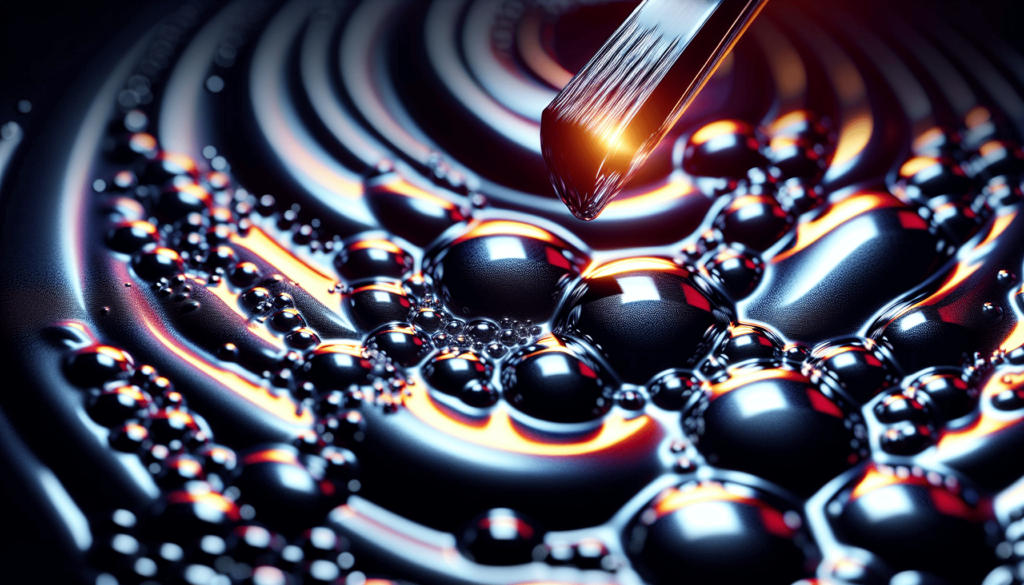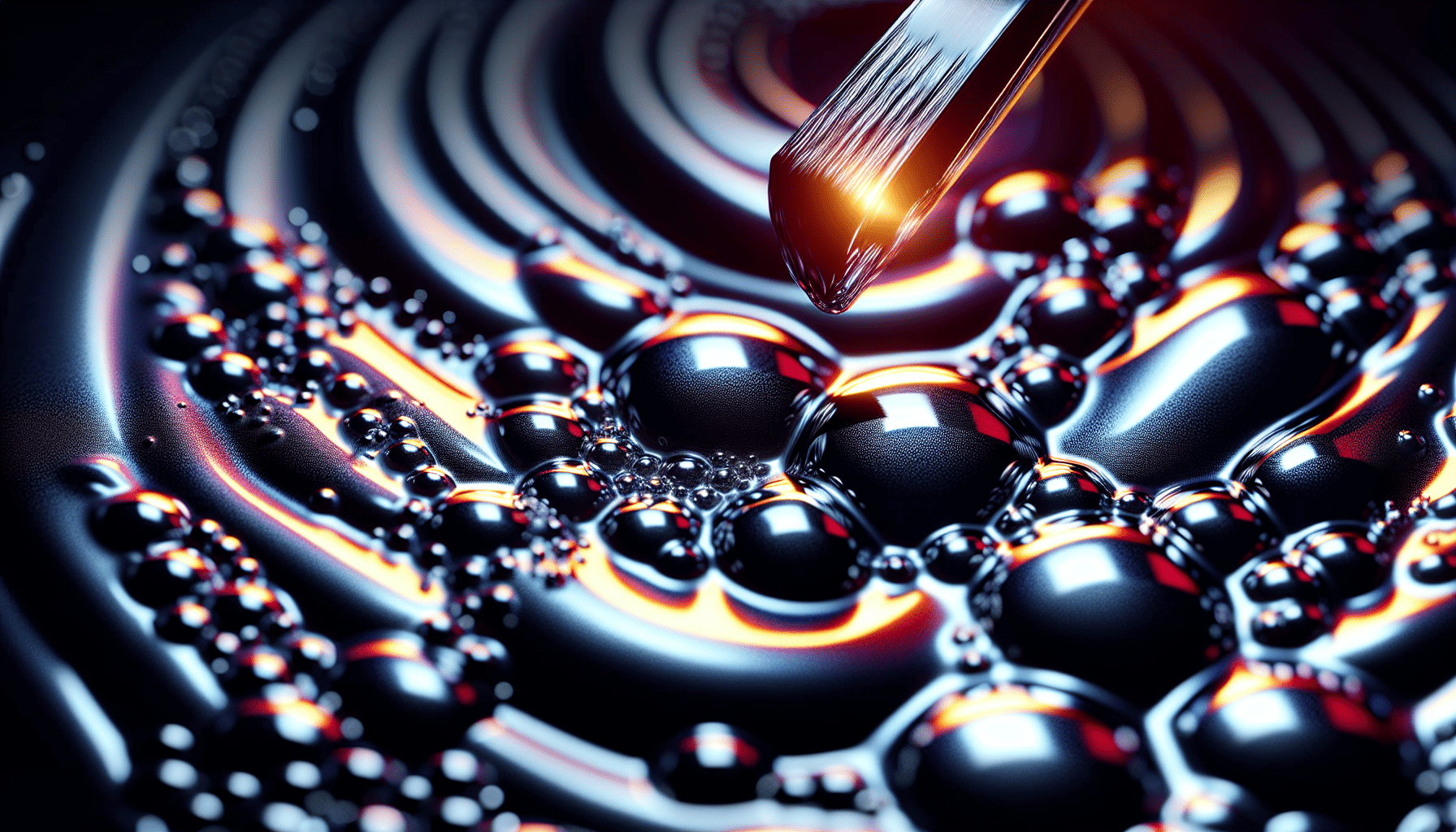Embarking on a journey towards understanding the mechanics of auto paint can be quite enlightening. It becomes even more interesting when you explore the components that comprise auto paint. In the pursuit of knowledge, one paramount question that you should be asking is: “Is auto paint oil based?” This is a noteworthy question as it unravels the fascinating chemistry intertwined in the world of automotive industry. The answer to this not only sheds light on the long-standing history of the use of paint in the automotive world but also offers an in-depth look into the evolution of paint, its durability, and its reaction to differing weather conditions. This article is primed to provide you with an insight into this crucial characteristic of auto paint, engendering a comprehensive understanding that would be beneficial whether you are a car owner, a future mechanic, or simply a curious mind.

Overview of Auto Paint
Automotive paint, also known as auto paint, is a type of paint that’s specifically designed and formulated to be used on motor vehicles. It’s the outermost layer applied to a car’s body, and its functions extend beyond aesthetics.
Definition of auto paint
Auto paint, as suggested, is a substance applied as a liquid or a spray that then dries to form a solid coating. This coating serves to provide color to the vehicle, but equally as important, it also offers a layer of protection, not only on the surface of a car’s body but also beneath it.
Purpose of auto paint
While the most obvious purpose of automotive paint is to enhance the visual appeal of a vehicle, it serves several other crucial roles. Auto paint forms a barrier that protects the metal underneath from environmental elements such as UV rays, acidic rain, and extremes in temperature. Equally, it prevents the onset of rust, thus increasing the lifespan of the vehicle.
Composition of auto paint
Automotive paint is composed of three main components: pigment, binder, and solvent. Pigments give the paint its color, while binders (often known as resins) cause it to stick to the surface. Lastly, solvents, or thinners, keep the paint in a liquid state until it is applied and dries.
Different Types of Auto Paint
There are several types of auto paint available on the market, each with its own unique qualities and advantages. The type of paint you choose largely depends on your specific needs and preferences.
Oil-based auto paint
Oil-based auto paint, also known as solvent-based paint, is primarily composed of pigment and oil, usually alkyd. It offers a high level of gloss and is known for its durability and longevity.
Water-based auto paint
In contrast, water-based paint blends pigment with water, providing a more eco-friendly alternative to oil-based paint. These paints have become increasingly popular due to their lack of volatile organic compounds (VOCs).
Acrylic auto paint
Acrylic auto paint provides a high-gloss, show-quality finish. They’re available in two types: acrylic lacquer, which is easy to use but lacking in durability, and acrylic enamel, which is more challenging to apply but provides improved longevity.
Enamel auto paint
Enamel paint creates a hard, glossy finish that is resistant to scratches and is exceptionally durable. However, it tends to be more challenging to apply correctly.
Characteristics of Oil-Based Auto Paint
Oil-based auto paint is a popular choice due to its range of associated benefits, but it is not without its drawbacks.
Definition of oil-based paint
Oil-based paint, in the context of automotive paint, utilizes a solvent that consists of different types of oil. Typically, the paint is slow-drying, giving it a smooth and hard finish once dried.
Advantages of oil-based auto paint
One of the most significant advantages of oil-based auto paint is its durability. It creates a hard, solid finish that is resilient against scratching and chipping, which can be invaluable for automobiles that are heavily used. Additionally, it’s excellent in covering over minor imperfections on a car’s surface.
Disadvantages of oil-based auto paint
Despite its assets, oil-based auto paint is not without its disadvantages. One of the most notable is its impact on the environment, releasing a higher count of volatile organic compounds (VOCs) compared to water-based paints. Additionally, the slower drying times associated with oil-based paint might be seen as a disadvantage.
Common applications of oil-based auto paint
Given its durability, oil-based paint is commonly used in applications where resilience and longevity are required. This can include commercial vehicles that need to withstand heavy use and harsh conditions.
Does Auto Paint Contain Oil?
While auto paint can either be oil-based or water-based, it’s important to note that all auto paint contains oil in some shape or form.
Oil content in auto paint
Oil content in auto paint refers to the oils used to form the binder, the component that grants the paint its adhesive properties. In oil-based paints, this is usually alkyd oil, while water-based paints use water-soluble types of oil.
Purpose of oil in auto paint
Oil plays a pivotal role in the formulation of auto paint. It helps in providing the paint’s adhesive capabilities, ensuring the paint sticks to the car’s body effectively.
Other ingredients in auto paint
In addition to oil and pigment, other essential elements in auto paint include solvents, which help keep the paint in a liquid state for application, and additives, which provide properties such as rust protection and UV resistance.

Comparison with Water-Based Auto Paint
Understanding the key differences between oil and water-based auto paint can assist you in making an informed decision regarding the most suitable type for your needs.
Differences in composition
Oil-based paint primarily uses oils as solvents, while water-based paint uses water or water-soluble solvents, which makes it less harmful to the environment.
Differences in application
Water-based paint dries more rapidly than oil-based paint, allowing for quicker application of subsequent layers. However, due to this speed, it can also dry before it evens out, potentially leading to a less smooth finish.
Advantages of water-based auto paint over oil-based
Water-based paints produce fewer VOCs, making them more eco-friendly. They also offer easier clean up, as brushes and equipment can be rinsed with water.
Advantages of oil-based auto paint over water-based
Oil-based paints tend to provide a more durable finish and better coverage, making them particularly suitable for heavy-wear surfaces and significant improvements.
Safety and Environmental Considerations
Safety, health, and environmental considerations are essential to consider when working with auto paint, especially oil-based varieties.
Health risks of oil-based auto paint
Volatile organic compounds, present in oil-based paints, can pose health risks including headaches, dizziness, and skin irritation. Long-term exposure can potentially lead to more serious health issues.
Effects on air quality and pollution
Oil-based paints produce a considerable level of VOCs, which contribute to air pollution. VOCs can also interact with nitrogen oxides in the presence of sunlight to produce ground-level ozone, a primary component of smog.
Proper disposal and handling of oil-based auto paint
Waste oil-based paint should be disposed at designated hazardous waste collection centers. It should not be poured down the drain or discarded with regular household waste.
Choosing the Right Auto Paint
Selecting the right auto paint requires careful consideration of a number of factors.
Factors to consider
Some of the deciding factors include the type of vehicle, the level of usage the vehicle will see, and the environment in which the vehicle will be used, among others.
Suitability for different surfaces
Different paints have different levels of adhesion and durability on various surfaces, so it’s vital to choose one compatible with your car’s body material.
Budget considerations
Cost is another significant factor. While oil-based paints might initially be more expensive than their water-based counterparts, their long-term durability might make them more cost-effective over time.
Environmental impact
The environmental impact of the paint is another crucial point of consideration. Water-based paints, which produce fewer VOCs, are generally more environmentally friendly.
Maintenance and Care for Oil-Based Auto Paint
Taking proper care of your oil-based painted surfaces can extend their life and keep them looking like new for longer.
Cleaning and washing techniques
Regular washing and cleaning can go a long way towards protecting your paintwork. Rinse your car with water before applying any soap to remove loose dirt and debris that could potentially scratch the paint.
Protection against damage and fading
Parking your vehicle in a garage or under a carport can protect it from UV damage, as well as environmental factors like hail or bird droppings. A wax or sealer can also provide an additional layer of protection.
Regular maintenance routines
Establish a routine maintenance schedule to keep your car looking its best. This should include regular washing, occasional waxing, and touch-ups of any chips or scratches that occur.
Recent Developments and Alternatives
In an increasingly environmentally conscious world, there have been several important developments in auto paint technology.
Emerging technologies in auto paint
New technological advancements in auto paint include self-healing paint, which is capable of repairing itself if scratched or chipped, and electrochromic paint, which can change color with the application of an electric current.
New eco-friendly options
Eco-friendly options have also been introduced, such as waterborne and high-solids paints, which contain less or no VOCs.
Trends in the automotive industry
One significant trend is the rising popularity of matte finishes, which provide a modern, stylish look. However, this type of paint finish requires specific care to maintain its appearance.
Conclusion
Auto paint serves several critical roles beyond just aesthetic enhancement. It provides protection for your vehicle, and choosing the right type can greatly affect the longevity of your car. While oil-based paints offer durability, they also come with environmental considerations. As the auto industry continues to evolve, new trends and advancements promise more choices for consumers. Hence, the decision will ultimately depend on your particular needs, preferences, and ecological concerns.



